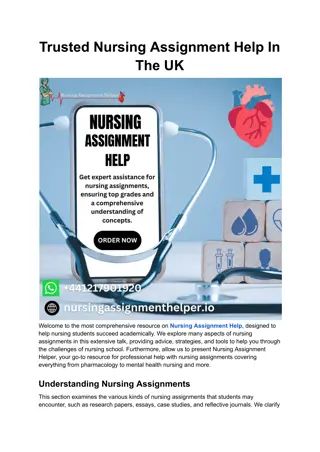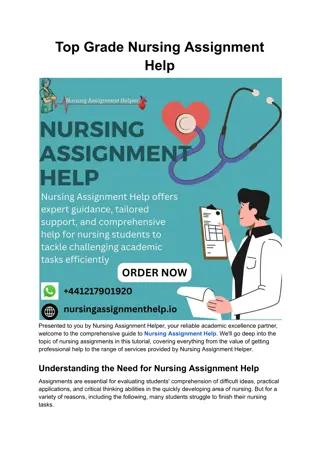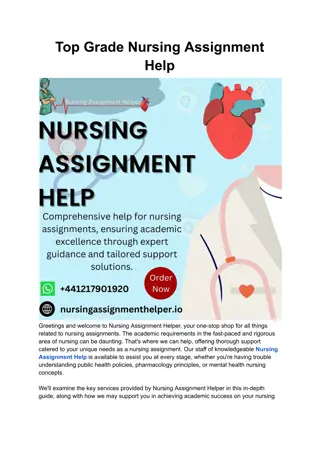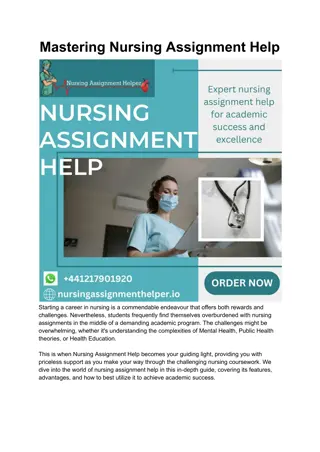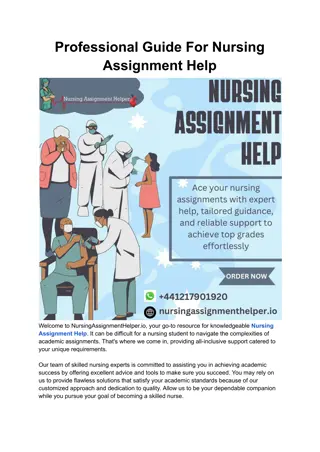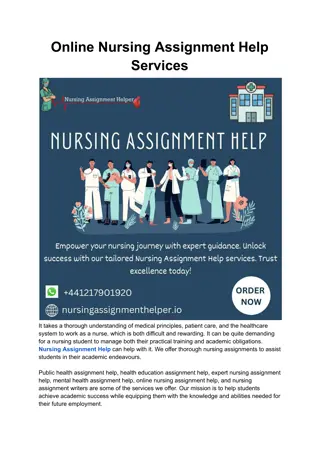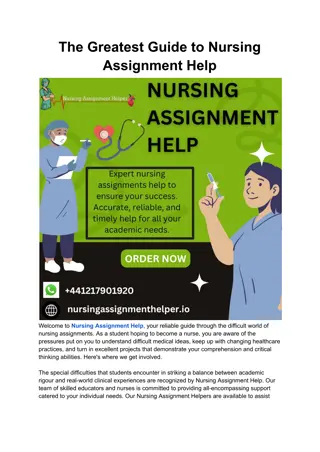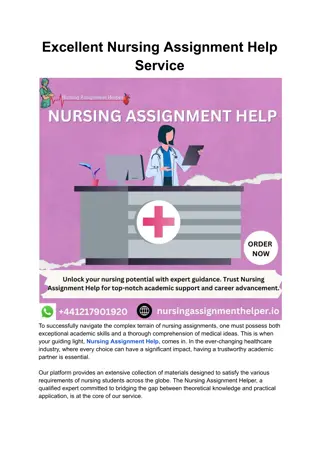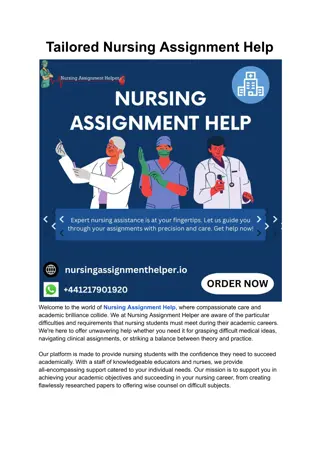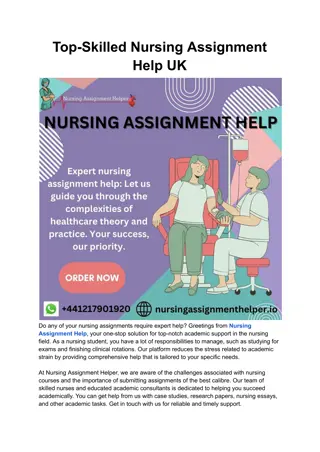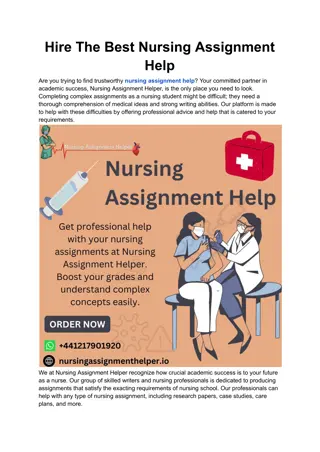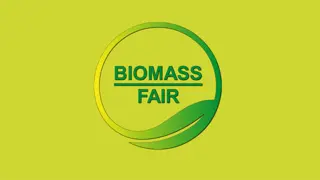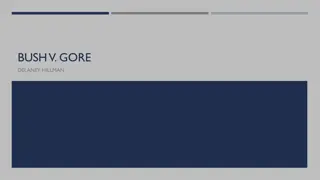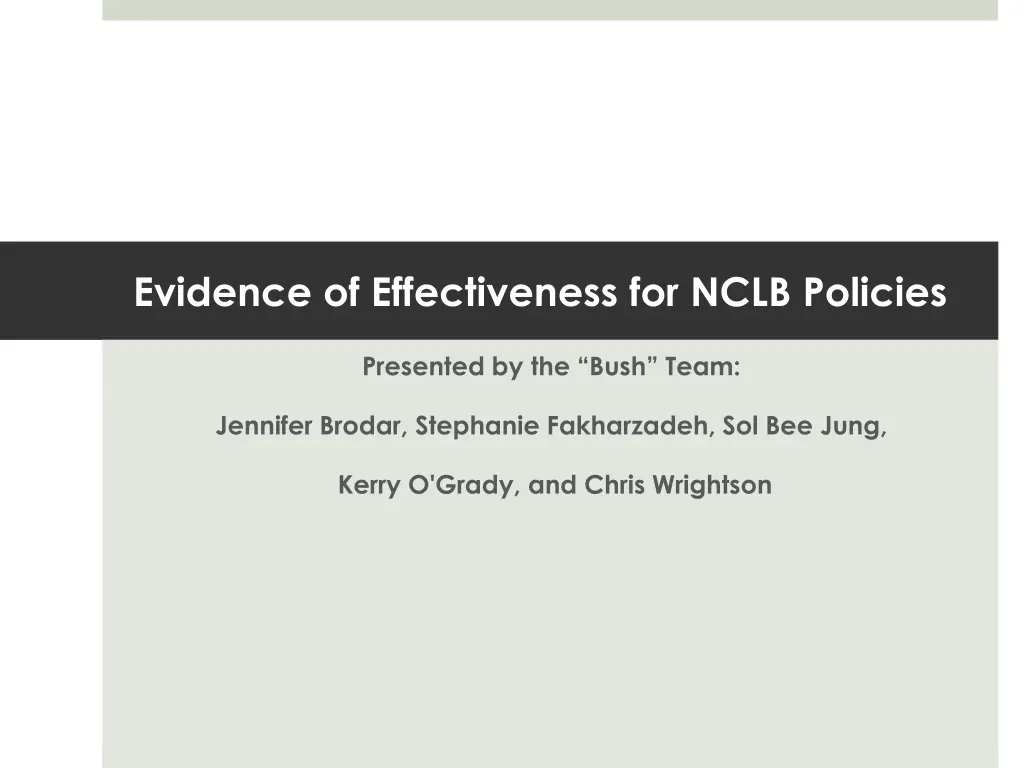
Understanding Policy Impact on Education Effectiveness
Explore the effectiveness of NCLB policies presented by the Bush team through assessments, standards, accountability, school choice, and funding. Delve into key ideas like assessments by NAEP, adoption of standards, the Texas Miracle, school choice evidence, and funding implications.
Download Presentation

Please find below an Image/Link to download the presentation.
The content on the website is provided AS IS for your information and personal use only. It may not be sold, licensed, or shared on other websites without obtaining consent from the author. If you encounter any issues during the download, it is possible that the publisher has removed the file from their server.
You are allowed to download the files provided on this website for personal or commercial use, subject to the condition that they are used lawfully. All files are the property of their respective owners.
The content on the website is provided AS IS for your information and personal use only. It may not be sold, licensed, or shared on other websites without obtaining consent from the author.
E N D
Presentation Transcript
Evidence of Effectiveness for NCLB Policies Presented by the Bush Team: Jennifer Brodar, Stephanie Fakharzadeh, Sol Bee Jung, Kerry O'Grady, and Chris Wrightson
Key Policy Idea 1: Assessments NAEP (1960 s) National Assessment Governing Board 1992: Created achievement levels Basic, Proficient, Advanced Previously only comparative Statewide Testing Implemented from 1992-1997 Develop own vs. commercial assessment Balance of open response and multiple choice Considerations of reliability, cost & time Validity (Researchers) Construct validity Bias across populations Teaching to the test Accountability (Politicians) Easier to tie numbers to funding
Key Policy Idea 2: Standards 14 States had adopted standards (2000) Diane Ravitch National Standards in American Education: A Citizen's Guide.(1995) Schmoker & Marzano Bloated content standards need trimming Only effective when fully taught & assessed Rotherham s White Paper Wanted National Standards 29/44 TIMSS Countries had them Textbook coverage vs. performance Little evidence on effectiveness of standards Little clarity on standards for standards 1993 CPRE Policy Brief
Key Policy Idea 3: Accountability Bush s Texas Miracle Implemented high-stakes testing Houston Dropouts fell (Later determined creative classifying ) Test scores rose (Later determined to be Pearson test-taking tests) Kentucky Example High-stakes testing in two year cycles 34% of Schools met goal 60% of general public supported idea 60% of principals and 75% of teachers opposed idea
Key Policy Idea 3A: Choice Evidence from business world free market vote with your feet Racial/economic segregation Private schools perform better than public schools Hard to separate value-added from selection criteria Hoxby- 1998 More school districts in area lead to higher achievement & lower per pupil spending Concerns of confounding variables/statistical assumptions Parents choose based on location, not quality Alum Rock, CA Minnesota- less than 2% took advantage of statewide choice
Key Policy Idea 3B: Funding Rotherham s White Paper $118 Billion on Title I, achievement gap stayed static Some improvement for lowest-income students Needed better support for LEP 44% drop out rate for Hispanic students born outside US 15% of schools that needed LEP funding in 1998 got it Need to shift from program-based funding to evidence-based $1.2 billion class-size reduction under Clinton Teacher quality proven to be more impactful Impoverished areas: $4.63 per pupil federal funding & $0.62 state Tying funding to evidence would push research
References Developing Content Standards: Creating a Process for Change. CPRE Policy Brief., October 1993. http://eric.ed.gov/?id=ED362981. Fuhrman, S. H. (1999). The New Accountability. CPRE Policy Brief. Retrieved from http://eric.ed.gov/?id=ED429336 Goldhaber, Dan D. School Choice: An Examination of the Empirical Evidence on Achievement, Parental Decision Making, and Equity. Educational Researcher 28, no. 9 (December 1, 1999): 16 25. doi:10.3102/0013189X028009016. Hamilton, L., Stecher, B., & Yuan, K. (2008). Standards-Based Reform in the United States: History, Research, and Future Directions. Leung, R. (2013, February 18). Bush s Texas Miracle debunked, Lone Star State sparks anti-testing revolution. Retrieved February 18, 2015, from http://www.msnbc.com/msnbc/bushs-texas-miracle-debunked-lone-star-st McDonnell, L, and C Choisser. Testing and Teaching: Local Implementation of New State Assessments. National Center for Research on Evaluation, Standards, and Student Testing (CRESST), Center for the Study of Evaluation (CSE), Graduate School of Education & Information Studies, University of California, Los Angeles, 1997. Mullis, Ina V. S., and And Others. NAEP 1992--Reading Report Card for the Nation and the States: Data from the National and Trial State Assessments. U.S. Government Printing Office, Superintendent of Documents, Mail Stop: SSOP, Washington, DC 20402- 9328., 1993. http://eric.ed.gov/?id=ED369067. Nave, Bill, Edward Miech, and Frederick Mosteller. A Lapse in Standards - Linking Standards-Based Reform with Student Achievement. Phi Delta Kappan 82, no. 2 (October 1, 2000): 128. Rotherham, A., & Insitute, P. P. (1999). Toward performance-based federal education funding. Policy Report. Schmoker, M., & Marzano, R. J. (1999). Realizing the promise of standards-based education. Educational Leadership, 56, 17-21. Smith, Mary Lee, and Patricia Fey. Validity and Accountability in High-Stakes Testing. Journal of Teacher Education 51, no. 5 (November 1, 2000): 334 44. doi:10.1177/0022487100051005002. Stanford, J. (2013, February 18). The Texas Miracle. Retrieved February 18, 2015, from http://www.cbsnews.com/news/the-texas- miracle/ Stanford University. (2000). History of standards based reform. Retrieved from http://web.stanford.edu/~hakuta/www/archives/syllabi/CalTex_SBR/historysbr.html


